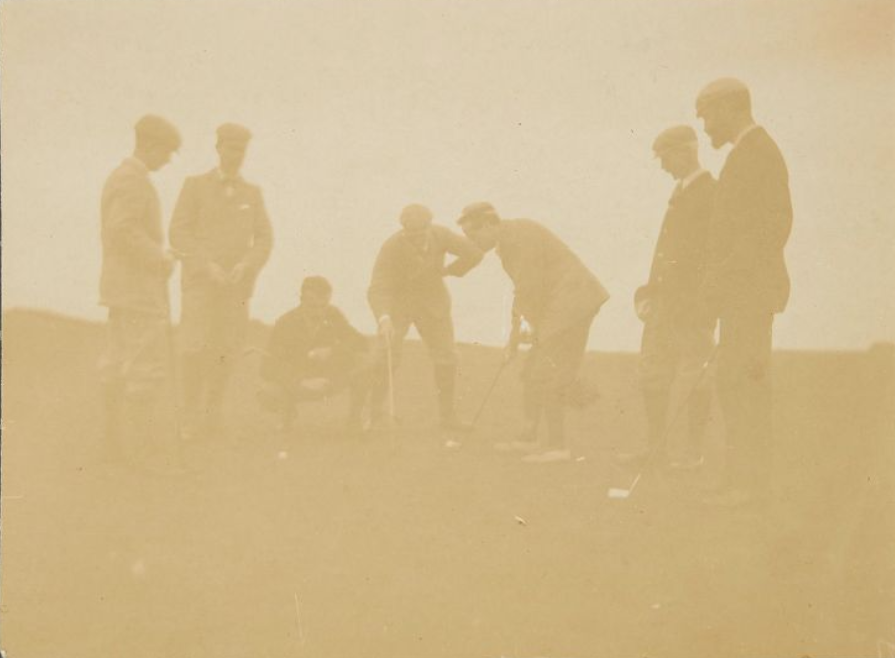Our Collections are rich and diverse, and our staff members are dedicated to their care and stewardship. However, it can sometimes be hard to keep up with all the work going on behind the scenes. So why not take this chance to stop and reflect before the end of the year?
In this December Blog, we are going to present some of our work, reveal some of our least talked-about Collections… and ask you to join in our carols if you can.
On the run-up to Christmas my Museum Collections gave to me…
The Wardlaw Museum reopened its doors to the public in June 2021 after a major redevelopment, which made room for new temporary exhibitions and reimagined display galleries.
This specimen is now on display in the Museum – but very little is known about how it first came into the Collections. More on this later.
Exhibit is a tool that was developed at the University of St Andrews to allow students and researchers to interact with objects digitally when they are difficult to access physically. Digitised material now includes 3D models, manuscripts, muniments, rare books, artworks, and photographs.
This clay pot is an example of the results that can be achieved through this tool. Have a look at the Exhibit for this object.
Our Collections consist of around 115,000 artefacts and specimens reflecting more than 600 years of academic enquiry, creativity and innovation.
These three boards are carved with the names of St Andrews students – can you read any of them? And do you know where these boards were originally located?
The Collection of Historic Scientific Instruments is a Recognised Collection of National Significance. It comprises over 500 items illustrating the history of teaching and research in Natural Philosophy, Physics and Astronomy and the physical sciences in the University over a period of five centuries.
These four brass cowbells on a wooden stand were used for their acoustic function. Pitch is marked on each of the bells.
The Chemistry Collection contains a broad selection of equipment and apparatus used in the teaching of chemistry from 1811, from balances and polarimeters to glassware and retorts.
These five small precision thermometers contain mercury and have an internal centigrade scale. They are held in a case which also includes a note dated 1931 and signed Dr John Dewar. Do you know who Dewar was?
Our Zoology Collection includes a large number of wet specimens like the one in the picture, which are preserved in fluid. The specimens are fixed in either formalin (formaldehyde aqueous-based solution) or ethanol (80% concentrate Industrial Methylated Spirit).
As these preservative fluids auto-dilute, part of this Collection’s ongoing care is to ensure the wet specimens are never… dry. This takes time and expertise, but it is very rewarding, as it gives them a new life.
Seven Men Playing Golf

Collection: John Buchanan Collection
Medium: Albumen Print
Town, gown, and… golf! Our Collection tells stories about the University, but also about St Andrews itself. Some argue that the two are, at times, impossible to tell apart. It only makes sense to have some records of the history of Golf.
This photograph is part of the Buchanan Collection, which includes seven late-19th and early-20th century photographic albums. Will that putt be successful?
Another example from the Historic Scientific Instruments Collection, this set of eight wooden sounding rods would have played a full octave. These instruments would have been dropped to produce the note marked on their label.
Caring for these objects is part of our mission, as their existence attests to the University’s long history of learning, experimenting, and advancing knowledge.
Yes, we have got art as well!
The Boswell Collection was inaugurated in 1995 by Margery Boswell as a memorial to her late husband, and it is rich with diverse treasures from the best of Scottish Contemporary art.
This work is by Edward Summerton, prominent multi-disciplinary artist whose practice often focuses on nature.
Check out the Boswell Collection at this link.
The Bell Pettigrew Museum houses, in its extensive display areas and stores, the University’s Zoology Collection of c.13,500 specimens.
Documentation about the acquisition of specimens such as these eggs is vast, but not all of it is yet reflected in our Catalogue. Provenance research projects help us understand where our Collections come from, and uncover the involvement of individuals – especially women – who contributed to their survival.
This artwork was produced at the beginning of the 1900s by MacGeorge, a Scottish Artist born in a small town in Dumfries and Galloway.
Scottish artists are well-represented in our fine art collections, which include works by renowned personalities such as Sir Henry Raeburn, David Wilkie, William Aikman, Thomas Duncan, Sir James Guthrie, George Fiddes Watt, and Beatrice Huntingdon.
This photo is part of a series taken in Northern Ireland for the James Valentine firm, which began operation in 1851 in the city of Dundee, Scotland.
The primary outlet for the views produced was the leisure and tourist market, and the subjects were the scenes associated with this. Stately homes, historic ruins, great open spaces, beaches, the grandeur and curiosity of nature, and great engineering feats formed the basis of the firm’s repertoire – samples of which are included in our extensive James Valentine Collection.
Have any of these objects inspired you? Have you got any additional information, or is your organisation involved in similar projects? Let us know below, contact us through our socials, or drop us an email at [email protected].
Post ideated and written by Roisin Gilmore (Visitor Services Facilitator) and Matilde Zoppi (Digital Engagement Officer).










